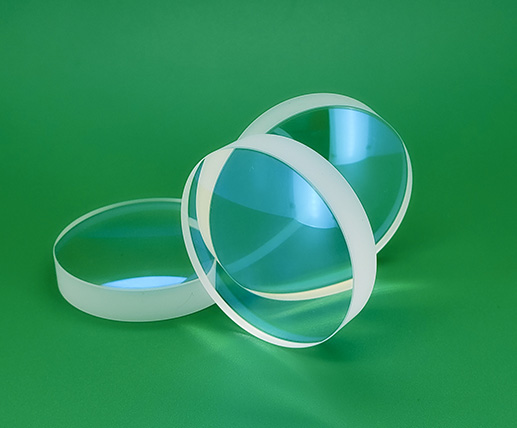Key Differences Between Plano Convex and Plano Concave Lenses
When it comes to optical components, lenses play a critical role in manipulating light for various applications, from imaging systems to laser technology. Two commonly used types are plano-convex and plano-concave lenses. While both optical lenses have a flat surface on one side, their curvature on the other side gives them distinct properties and uses. Understanding the key differences between these lenses can help in selecting the right one for your specific needs.
Shape and Structure
The most fundamental difference between plano-convex and plano-concave lenses lies in their shapes.
Plano-Convex Lenses: As the name suggests, these lenses have a flat surface on one side and a convex (outward-curved) surface on the other. The convex shape allows these lenses to converge light rays, making them ideal for focusing light into a single point.
Plano-Concave Lenses: In contrast, plano-concave lenses feature a flat side combined with a concave (inward-curved) side. The concave curvature causes the light rays passing through the lens to diverge, spreading them out rather than bringing them to a focal point.

Light Behavior: Convergence vs. Divergence
The primary functional difference between plano-convex and plano-concave lenses is how they interact with light.
Convergence in Plano-Convex Lenses:
Plano-convex lenses are known for their ability to converge parallel light rays. When light enters the curved convex surface, it bends inward and converges toward a focal point on the opposite side. This characteristic makes them ideal for applications like focusing beams in lasers, telescopes, and magnifying glasses.
Divergence in Plano-Concave Lenses:
On the other hand, plano-concave lenses cause light rays to diverge. When parallel light rays pass through the concave surface, they bend outward, dispersing in different directions. This makes plano-concave lenses well-suited for applications requiring light to spread out, such as beam expansion and reducing the size of images in optical systems.
Focal Length: Positive vs. Negative
Another key difference between these lenses is their focal length, which refers to the distance from the lens where light either converges or appears to diverge.
Positive Focal Length in Plano-Convex Lenses:
Since plano-convex lenses converge light, they possess a positive focal length. This means the focal point, where all the light rays meet, is on the opposite side of the curved surface.
Suggested reading:Key Considerations for Choosing Magnetic Yoke Testers
What is an Rf Analyzer and How Does It Work?
The Difference Between Signal Generator & Function Generator
What Is A Signal Generator Used For
10 Essential Benefits of Using Power Quality Analyzers in China
What are the Types of Flow Transmitters?
Negative Focal Length in Plano-Concave Lenses:
Choosing the Right Semi-Automatic Cap Torque Tester
Plano-concave lenses have a negative focal length due to their divergence properties. The light rays spread out, and the focal point is virtual, located on the same side as the incoming light.
Applications and Uses
The different light manipulation properties of these lenses make them suitable for distinct applications.
Applications of Plano-Convex Lenses:
These lenses are commonly used in scenarios where light needs to be focused. Examples include laser systems, imaging devices, and collimation. Their ability to concentrate light efficiently makes them useful for precision tasks such as beam focusing and light concentration in photovoltaic systems.
Applications of Plano-Concave Lenses:
Due to their divergence properties, plano-concave lenses are often used in applications requiring the expansion of light. Optical systems like beam expanders and laser diode collimators use these lenses to control light divergence, providing wider field views or adjusting light beams before further processing.
Selecting the Right Lens
Choosing between a plano-convex and plano-concave lens depends on your specific optical needs.
Need to focus light?
Opt for a plano-convex lens. Its ability to concentrate light into a precise point is essential for tasks like laser focusing and imaging.
Need to expand or spread light?
A plano-concave lens is the better choice. Its divergent properties make it ideal for expanding light beams or defocusing systems.
Conclusion
Understanding the differences between plano-convex and plano-concave lenses is crucial for selecting the right optical component for your project. Plano-convex lenses excel at converging light with positive focal lengths, making them ideal for focusing tasks. Plano-concave lenses, with their light-diverging properties and negative focal lengths, are best for spreading light. By recognizing these distinctions, you can ensure optimal performance in your optical applications.
Suggested reading:What Is the Best Smoothness Tester Solution?
Ultimate Guide to Multi Channel Ultrasonic Flaw Detectors for Flaw Detection
How Power Quality Analyzers Solve Common Issues in China
Finding Your Perfect Tissue Thickness Tester Supplier: Eliminate Quality Headaches Today!
Essential Factors for Choosing Wire Rope Testers
Understanding X-Ray Flaw Detection Systems: Benefits and Applications Explained
Discover the Best Smoothness Tester Solution for Quality Control

